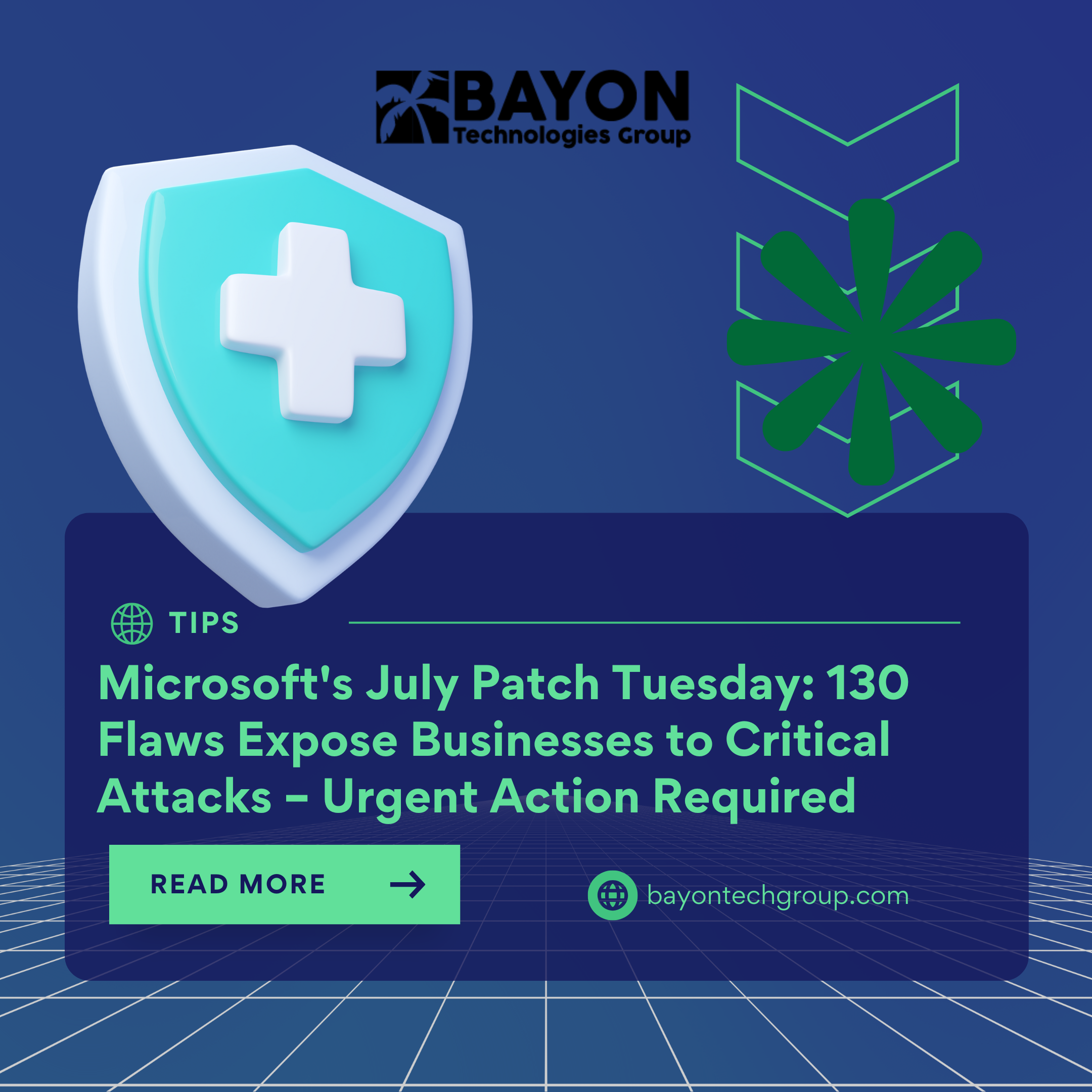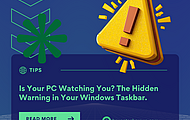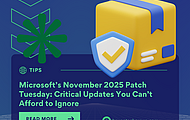Microsoft's July Patch Tuesday: 130 Flaws Expose Businesses to Critical Attacks – Urgent Action Required

Among the 130 vulnerabilities fixed by Microsoft's July 2025 Patch Tuesday were six serious ones that allow zero-click and remote code execution (RCE) attacks. Delaying patches could leave your company vulnerable to catastrophic breaches as threat actors deliberately use these flaws as weapons. Here are some things you should know to safeguard your systems right away!
Critical Vulnerabilities Demanding Priority Patching
Outlook Zero-Click RCE (CVE-2025-XXXX)
- Risk: Attackers execute malware by sending a malicious email – no clicks required.
- Impact: Full system compromise via weaponized calendar invites or meeting requests.
- Affected: Outlook desktop (Windows/macOS) and web clients.
Windows DNS Server RCE (CVE-2025-XXXX)
- Risk: Exploited over the network without authentication.
- Impact: Domain takeover, credential theft, and ransomware propagation.
- Affected: Windows Server 2022/2019 (DNS role enabled).
Windows Hyper-V Escape (CVE-2025-XXXX)
- Risk: Compromised virtual machines breach host systems.
- Impact: Cloud infrastructure takeover and cross-tenant attacks.
Real-World Threat: These flaws are already integrated into ransomware kits like BlackSuit and Akira.
Why It's Too Soon for These Patches
- Zero-Day Exploitation: An active attack has validated an Outlook flaw.
- Network-Wide Exposure: Whole domains are at risk due to DNS Server vulnerabilities.
- Threats to the Cloud Supply Chain: Hyper-V escape puts MSPs at risk of multi-client breaches.
- 102-Day Average Patch Delay: Hackers take advantage of the fact that most businesses take longer than three months to patch (Ponemon).
Steps for Immediate Mitigation: Patch in 72 Hours
- Install updates for Windows Server (KB503XXXX), Outlook, and Hyper-V.
- Separate the Important Systems:
- Distinguish cloud hosts and DNS servers from core networks.
- Turn Off Unused Features:
- Turn off the "Preview Pane" in Outlook until it has been patched.
- Track Threat Activity:
- Look for unusual DNS requests and the implementation of Outlook rules.
Patch Fatigue: The Unspoken Danger
Microsoft patched more than 1,400 vulnerabilities in 2025 alone, leaving IT workers with "patch fatigue." This results in:
- Important updates were deprioritized.
- Manual deployments with incorrect configurations
- According to IBM, emergency breaches cost 40% more.
Bayon Technologies Group: Turn Patch Chaos into Unbreakable Security
Reactive patching loses the battle against zero-day threats. Bayon Technologies Group delivers proactive protection:
✅ Automated Patch Orchestration
Prioritizes critical updates (like July’s RCEs) within 24 hours.
✅ Zero-Day Threat Intelligence
Blocks weaponized Outlook emails & DNS exploits pre-exploitation.
✅ Cloud Workload Hardening
Secures Hyper-V/Azure environments with micro-segmentation.
✅ Vulnerability Lifecycle Management
Continuous scanning, testing, and compliance reporting.
✅ 24/7 SOC Overwatch
Hunts for active exploitation between patch cycles.
Don’t let patch fatigue become your biggest breach vector.
‹ Back







